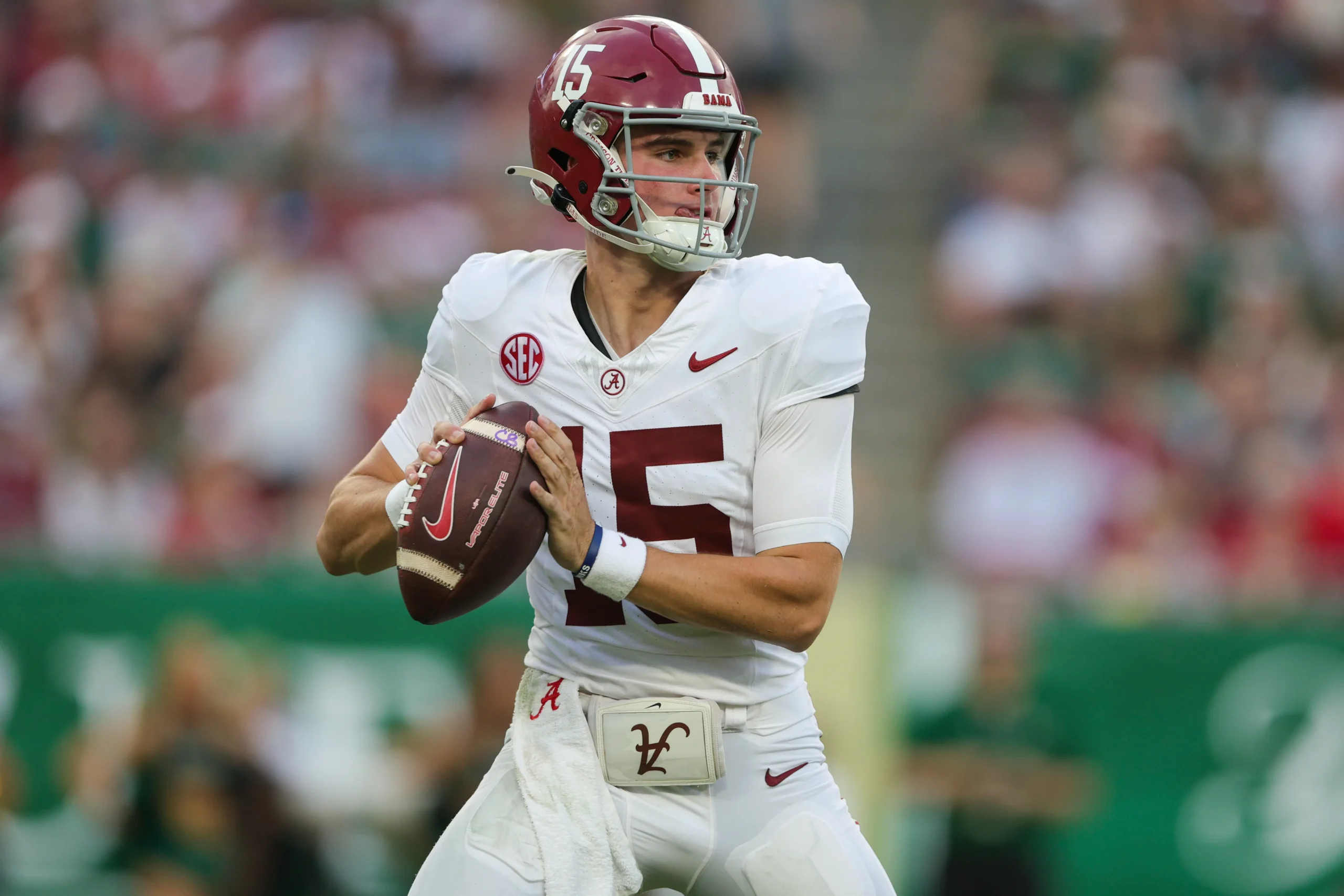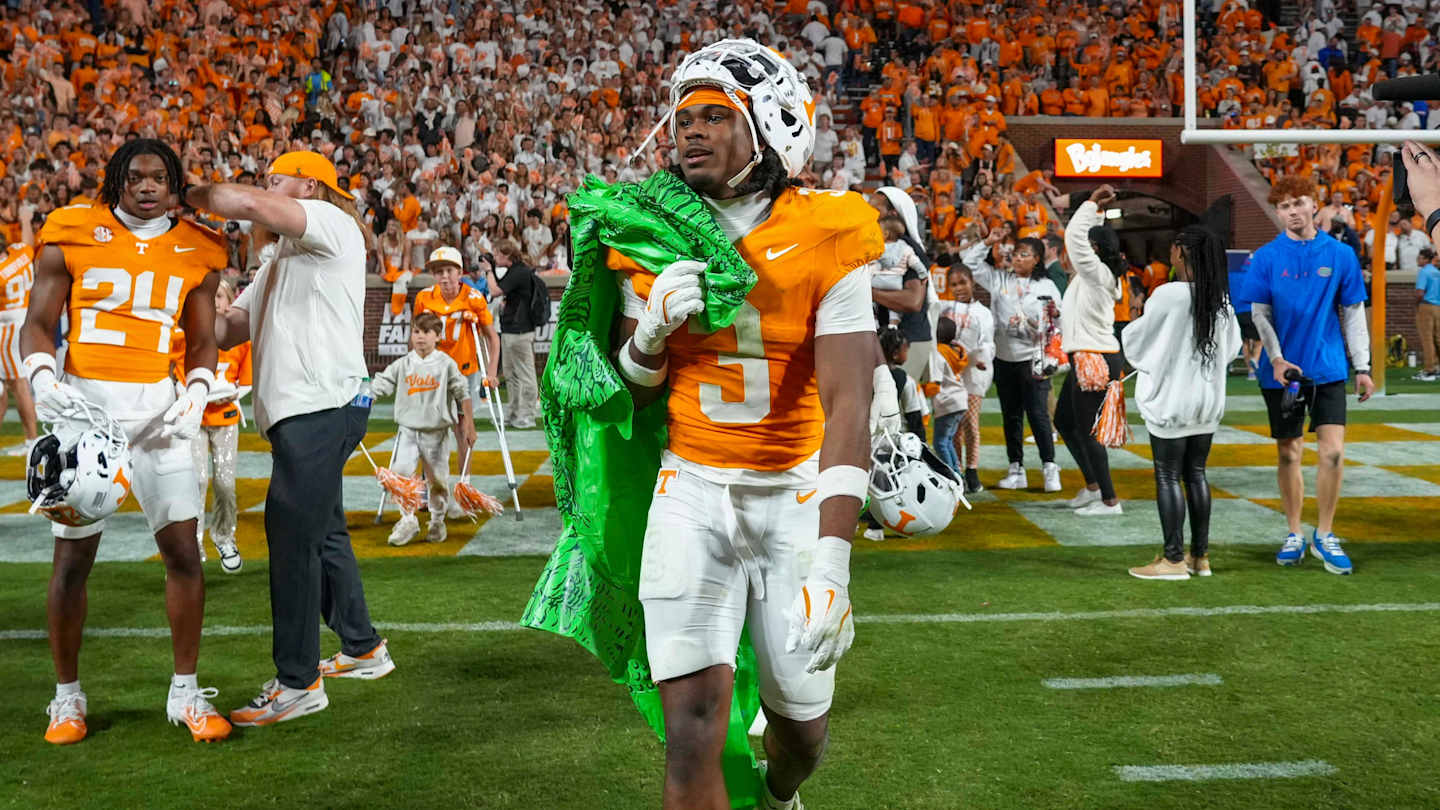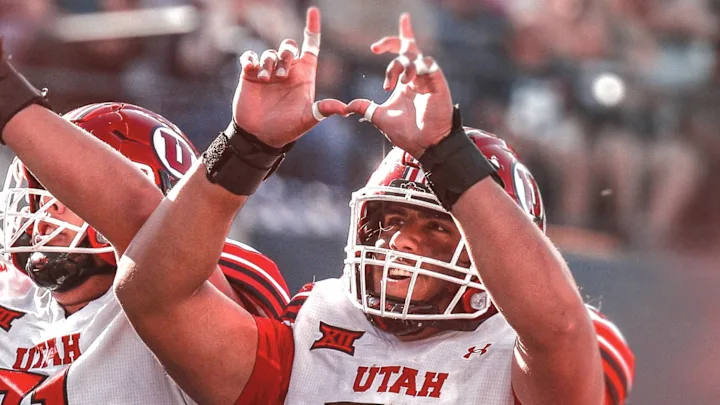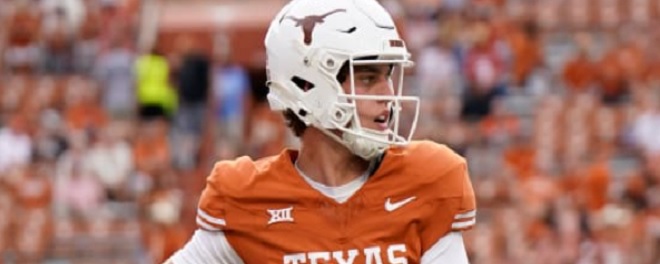By Charlie Campbell.
Send Charlie an e-mail here: [email protected]
Follow Charlie on Twitter @draftcampbell for updates.
This page was last updated April 18, 2016. Follow me @walterfootball for updates.
Position Review: Offensive Tackles
Offensive Tackle Class
Early-round talent: B+
Mid-round: B
Late-round: C
Overall grade: B-
2016 prospects vs 2015
Laremy Tunsil
Ereck Flowers
Ronnie Stanley
Andrus Peat
Cedric Ogbuehi
Jack Conklin
D.J. Humphries
Taylor Decker
Donovan Smith
Germain Ifedi
Jake Fisher
Le’Raven Clark
Jason Spriggs
Rob Havenstein
Ty Sambrailo
Shon Coleman
This year’s draft class doesn’t have as good of group of tackles as 2015. The 2016 NFL Draft though has the best tackle prospect over perhaps the past three drafts with Laremy Tunsil. In my opinion, Tunsil is a better prospect than Greg Robinson, who went No. 2-overall in the 2014 NFL Draft.
If you were to merge the two classes, Stanley is a similar prospect to Flowers and Peat. Conklin could go higher than Ogbuehi or Humphries, but Conklin isn’t as athletic as either of them. Decker is close to Donovan Smith as a prospect. Ifedi is just behind them, but limited to right tackle. Clark and Spriggs are better prospects than Havenstein and Sambrailo, even though Clark and Spriggs are on the second- and third-round bubble. Coleman is more of a third-rounder.
Safest Pick: Laremy Tunsil, Ole Miss

The 6-foot-5, 310-pound Tunsil is tailor made to be a franchise left tackle in the NFL. He has great feet, quickness, athleticism, agility and bending ability to negate speed rushers. Tunsil also is strong to get movement in the ground game. Throughout his college career, he was superb at protecting his quarterback and also is a good run blocker. I would be surprised if Tunsil doesn’t become a Pro Bowler and a 10-year starter if he stays healthy.
Matthews is okay, but hasn’t proven to be a franchise left tackle yet. Joeckel has been a huge disappointment and is closing in on bust status if he doesn’t turn things around next season.
2015 Pick: Ereck Flowers
2014 Pick: Jake Matthews
2013 Pick: Luke Joeckel
Biggest Bust Potential: Shon Coleman, Auburn

I think Jack Conklin is very overrated and he could disappoint, but at least, he should be a decent guard or right tackle in the NFL. In speaking to teams, some have Coleman graded in the third round while others have him later. However, there is the possibility that he will go in the second round, and that could be a big reach. As a player, Coleman (6-5, 307) has good size and gets movement in the ground game. He isn’t a great athlete, and I think he’ll have problems with NFL speed rushers. I think Coleman would be better off moving to guard or right tackle.
2015 Pick: La’el Collins
2014 Pick: Cyrus Kouandjio
2013 Pick: D.J. Fluker
Offensive Tackles Rankings by Attributes
Pass Protection:
NFL prototype: Joe Thomas, Browns
- Laremy Tunsil
- Ronnie Stanley
- Jack Conklin
- Le’Raven Clark
- Taylor Decker
- Germain Ifedi
- Jason Spriggs
- Shon Coleman
Recap: Franchise left tackles have to be rock solid in pass protection. Most teams feature a right-handed quarterback, so the left tackle has to be trusted to shut down pass-rushers coming from the blind side. Joe Thomas is the top offensive tackle in the NFL and is the current gold standard for a franchise left tackle.
Clearly, Tunsil has the ability to be an excellent left tackle in the NFL. He has a great feet, athleticism, and is a natural knee bender. He can negate speed rushers with ease and is strong in his base to stop bull rushes. Tunsil is an elite prospect to be a franchise left tackle.
Stanley was rock solid in his pass blocking at Notre Dame and, at times, looked like he had the potential to be dominant in the NFL. Stanley is very quick and is a good athlete on the edge. He had some issues when going against Shaq Lawson last season, and a lot of those problems came from defenders getting physical and overpowering Stanley. He is strong, but he has a finesse style and isn’t a fighter. Stanley has the speed and athleticism to be a good left tackle, but he needs to get nastier as power edge rushers could give him some problems until he adapts for that.
From a skill-set perspective, Clark is second only to Tunsil in this draft class. Clark is fast, long, agile and has good feet. He definitely has the athletic ability to be an excellent blind-side protector. However, Clark is very inconsistent. He would look great on one play and bad on the next. While Clark is very raw, good coaching could turn him into into a very good left tackle. The only reason why Clark isn’t rated third right now is because he is a massive project.
Conklin had good years at left tackle for Michigan State. He had some ugly games against Maryland’s Yannick Ngakoue and Baylor’s Shawn Oakman. Those illustrated his inability to handle special speed/strength rushers. Conklin is a solid technician, but isn’t a great athlete. Decker is the same way. Both could be better off on the right side in the NFL. Sources from multiple teams have echoed that to me. They feel you might be able to get away with either of them at left tackle, but ultimately will want someone quicker and more athletic manning the blind side.
Ifedi improved last year, but in the NFL, he could have some issues with speed rushers. Ifedi is inconsistent in his technique and some times reaches after rushers. He’s a right tackle.
Spriggs was a quality left tackle in college and is athletic, but he needs work to become a starter in the NFL. Coleman would be better off moving to guard or right tackle.
Run Blocking:
NFL prototype: Joe Staley, 49ers
- Germain Ifedi
- Laremy Tunsil
- Shon Coleman
- Ronnie Stanley
- Jack Conklin
- Taylor Decker
- Jason Spriggs
- Le’Raven Clark
Recap: Of the eight players above, there isn’t a bad run blocker in the group. They all had success at it in college. I had a really hard time in ranking them as a result. Of them, in my opinion. Ifedi has the most strength and nastiness to him, which is surprising because Texas A&M has coached its linemen not to have mean streaks. Ifedi can bully defenders around and push them out of their gap.
Over his collegiate career, Tunsil was a good run blocker for Ole Miss. He is strong at the point of attack and did his job to open up holes for ball-carriers. Coleman was a very effective run blocker for Auburn in recent seasons.
Stanley does well in man, power and zone plays. He can push around defenders and is able to get to blocks on the move. Conklin and Decker were very effective run blockers in college. They can get movement and open holes for their backs. Stanley is rated ahead because he is better in space and going to the second level.
Spriggs is a solid blocker, and the Hoosiers had a lot of success running behind him. He doesn’t pack as much punch as the others though. Clark was a reliable run blocker in college, but needs work on his technique and consistency for the NFL.
Feet:
NFL prototype: Tyron Smith, Cowboys
- Laremy Tunsil
- Ronnie Stanley
- Le’Raven Clark
- Jason Spriggs
- Jack Conklin
- Taylor Decker
- Germain Ifedi
- Shon Coleman
Recap: The best feet in the 2016 NFL Draft belong to Tunsil. He is very light on his toes and is very fast at shuffling his feet to get in position to head off speed-rushers. Tunsil has great, rare feet for a tackle prospect.
Stanley isn’t far behind and is just a notch below. He has quick feet, and can pick them up and put them down in his back pedal or firing out of his stance. Stanley and Tunsil are both dancing bears.
Clark has fast feet that allow him to get depth in his drop and get out in front in the ground game. He has excellent feet for a coach to work with.
Spriggs and Conklin have quality footwork as well. Spriggs isn’t quite as athletic as the top blockers. Conklin and Decker aren’t close to the top three in terms of feet, but they have good enough feet to survive on the edge.
At times, Ifedi has nice feet and tap dances well on the edge. He sometimes falls into a bad habit of reaching and lunging rather than moving, thus he’s behind these others.
Coleman doesn’t special good feet and hasn’t displayed as much agility as the players ranked above.
Quickness:
NFL prototype: Trent Williams, Redskins
- Laremy Tunsil
- Ronnie Stanley
- Le’Raven Clark
- Jason Spriggs
- Germain Ifedi
- Jack Conklin
- Taylor Decker
- Shon Coleman
Recap: Tunsil is the quickest tackle in the class; Stanley is second. Each is fast to get out of his stance and can fire into the second level of the defense. Both have good speed to move laterally, too. Their quickness will be an asset in the NFL.
Just like the footwork, Clark is on a par with the top two but isn’t as consistent. He has to get faster at getting depth in his pass-blocking drop and reacting to rushes to the inside.
Spriggs and Ifedi both move well. Conklin and Decker have enough to start on the edge. Coleman needs to get faster to handle NFL speed rushers.
Zone-Blocking Scheme:
NFL prototype: Duane Brown, Texans
- Laremy Tunsil
- Ronnie Stanley
- Jason Spriggs
- Le’Raven Clark
- Germain Ifedi
- Jack Conklin
- Taylor Decker
- Shon Coleman
Recap: All of these tackle prospects could execute in a zone-blocking system. They all have enough athletic ability and the speed to play it. Tunsil and Stanley are the best fits because they are fast while being extremely mobile. Each one has shown the ability to block on the move in their offenses.
Spriggs (6-6, 306) and Clark are also good athletes who could be good fits in a zone-blocking system. After them there’s a drop-off. Ifedi could execute a zone scheme, but is probably better in man. Conklin, Decker and Coleman would all be better off playing in a man scheme.
Man Scheme:
NFL prototype: Joe Thomas, Browns
- Laremy Tunsil
- Ronnie Stanley
- Jack Conklin
- Taylor Decker
- Jason Spriggs
- Germain Ifedi
- Shon Coleman
- Le’Raven Clark
Recap: The top two of Tunsil and Stanley could be great fits in a man-blocking scheme. They sustain their blocks well in the ground game and have the strength to push defensive linemen out of their gaps. Each can get movement at the point of attack.
Conklin is a good fit in a power-man scheme. He can be a forceful run blocker and take his lineman out of his gap. Conklin also can get to blocks on the second level. Decker is a good blocker for a man scheme. He will have to watch his pad level and knee bend in the NFL, but he was very consistent to generate movement in the ground game at Ohio State.
Spriggs, Ifedi, Clark and Coleman are all pretty equal in this category. They all could fit a power-man scheme. Clark is last because of his inconsistencies, and as a result, he might be better off in a zone scheme.
Guard/Right Tackle Potential:
NFL prototype: Zack Martin, Cowboys
- Jack Conklin
- Germain Ifedi
- Shon Coleman
- Jason Spriggs
- Le’Raven Clark
- Taylor Decker
- Laremy Tunsil
- Ronnie Stanley
Recap: Some teams like to move college tackles inside to guard or to right tackle. Other roster considerations also cause some tackles to start their careers on the right side or move in to guard. Tunsil and Stanley are ranked last because they almost definitely are only playing left tackle in the NFL. They have the skill set to move around, but that doesn’t make sense because they’re tailor made for left tackle. Perhaps they start out their careers at right tackle depending on the team that drafts them and what veterans they already have on their roster, but in time, Tunsil and Stanley will be left tackles. You may as well exclude them from this attribute.
I think Conklin could be a very good guard or right tackle similar to Zack Martin with the Cowboys. Guard or right tackle could be Conklin’s best home in the NFL. Ifedi and Coleman could be guards or right tackle in the NFL. Ifedi would be a nice fit at guard.
Spriggs could move to left guard or right tackle in the NFL. He has a versatile skill set and could adapt to a different position. In speaking with sources, they don’t think that Decker should be moved inside to guard. He should probably be a right tackle from start to finish in his career.
NFL Picks - Dec. 21
NFL Power Rankings - Dec. 17
2026 NFL Mock Draft - Dec. 17
Fantasy Football Rankings - Sept. 1




